2019 Virginia Energy Efficiency Leadership Awards
 The VAEEC celebrated the winners of its Fourth Annual Virginia Energy Efficiency Leadership Awards on Thursday, November 14th. The event was attended by over 150 people as part of the Fall 2019 Forum and Awards Luncheon. The awards showcase how energy efficiency champions across the Commonwealth are helping businesses, governments, homeowners, and schools save money on energy bills, reduce energy consumption, and stimulate job growth and our economy. These awards emphasize innovative projects or programs that demonstrate an outstanding or unique contribution to energy efficiency beyond that which is to be expected.
The VAEEC celebrated the winners of its Fourth Annual Virginia Energy Efficiency Leadership Awards on Thursday, November 14th. The event was attended by over 150 people as part of the Fall 2019 Forum and Awards Luncheon. The awards showcase how energy efficiency champions across the Commonwealth are helping businesses, governments, homeowners, and schools save money on energy bills, reduce energy consumption, and stimulate job growth and our economy. These awards emphasize innovative projects or programs that demonstrate an outstanding or unique contribution to energy efficiency beyond that which is to be expected.
Winners:
Academic
First Place: Get2Green Energy Conservation Program
Implementing Entity(ies): Fairfax County Public Schools
Second Place: Bluestone Elementary School
Implementing Entity(ies): Harrisonburg City Public Schools
Commercial
First Place: Thomas Jefferson’s Monticello Mountaintop Project Geothermal-Electric Plant
Implementing Entity(ies): 2RW Consultants, Inc.; Thomas Jefferson Foundation
Second Place: Essex Building
Implementing Entity(ies): VIA design architects, Siemens
Government
First Place: Commonwealth of Virginia Demand Response program, Energy Efficiency Program, State-wide program
Implementing Entity(ies): DMME – Department of Energy and CPower Energy Management
Second Place: Prince William County Western District Police Station Retro-commissioning
Implementing Entity(ies): Prince William County Department of Public Works
Low- Income
First Place: The Apartments at Kingsridge
Implementing Entity(ies): Community Housing Partners, Arnold Design Studios, Think Little
Second Place: Energy for All
Implementing Entity(ies): GRID Alternatives Mid-Atlantic
Residential
First Place: Klein Residence
Implementing Entity(ies): Sunbiosis PLC, Element Construction, Think Little
Second Place: Home Energy Audit and Retrofit Process
Implementing Entity(ies): Home Energy Medics
Program
First Place: Appalachian Power Company Low-Income Weatherization Program
Implementing Entity(ies): Appalachian Power Company, Community Housing Partners
Founder’s Award
Cynthia Adams, Pearl Home Certification
Bill Greenleaf, Virginia Community Capital
First Place Summaries:
Academic: Get2Green Energy Conservation Program
Fairfax County Public Schools is the 10th largest school district with more than 189,000 students, 220 facilities, and a 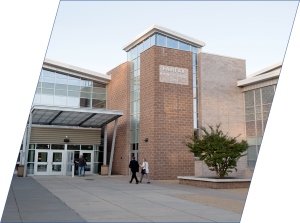 larger built environment than 4 Pentagons. The district strives to prioritize systems and practices maximizing energy efficiency. It launched an Energy Management Program in 2014 including the following:
larger built environment than 4 Pentagons. The district strives to prioritize systems and practices maximizing energy efficiency. It launched an Energy Management Program in 2014 including the following:
- Energy management, conservation, and educational programs improving building operations, system reliability, and use.
- Investment of nearly one-third of every project dollar on energy efficiency investments including building shell upgrades, LED lighting, and efficient heating and cooling equipment.
- Get2Green, the award-winning interdepartmental environmental stewardship program of energy conservation, expanded student involvement, and seeding community responsibility.
Goals of reducing energy consumption and improving building operations were achieved. As of 2018, kBTU energy consumption was 1.06 billion, a 13% reduction from 2013. More than $23 million in avoided energy costs were saved over 5 years despite 869,600 square feet of added space (equivalent to adding 87 Trader Joe’s stores). Annual Greenhouse Gas (CO2e) emissions cumulatively reduced 180,000 metric tons 2014 to 2018, the equivalent to over 3 million tree seedlings grown. FCPS earned the 2019 ENERGY STAR Partner of the Year Sustained Excellence Award in recognition of its ongoing energy achievements.
Commercial: Thomas Jefferson’s Monticello Mountaintop Project Geothermal-Electric Plant
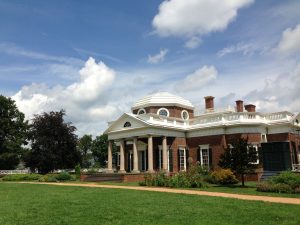 The Thomas Jefferson Foundation’s $35 million Monticello Mountaintop Project was a multi-year effort to restore Monticello as Jefferson knew it, and to tell the stories of the people ”enslaved and free” who lived and worked on the 5,000-acre plantation. The initiative included infrastructure upgrades and the replacement of outdated and inefficient heating, cooling, dehumidification, and ventilation systems.
The Thomas Jefferson Foundation’s $35 million Monticello Mountaintop Project was a multi-year effort to restore Monticello as Jefferson knew it, and to tell the stories of the people ”enslaved and free” who lived and worked on the 5,000-acre plantation. The initiative included infrastructure upgrades and the replacement of outdated and inefficient heating, cooling, dehumidification, and ventilation systems.
The project began with a thorough analysis of environmental conditions within the house and the implementation of a comprehensive building envelope plug-and-seal strategy. Then, custom zoned temperature and humidity controls were designed to preserve the house’s collections based on their type, historic value, and location within the building. A new geothermal-electric plant with a ground source heat pump (GSHP) system and dedicated heat recovery chillers (DHRCs) was designed and built to efficiently provide chilled and heating water and eliminate fossil fuel requirements.
Project benefits include:
- Elimination of fossil fuels
- Energy use and utility bills were cut in half
- Improved space temperature and relative humidity control for enhanced building and artifact preservation
- An enhanced visitor experience through the elimination of noisy HVAC systems
- Preservation of the view shed by minimizing/hiding utilities and generator
Government: Commonwealth of Virginia Demand Response program, Energy Efficiency Program, State-wide program
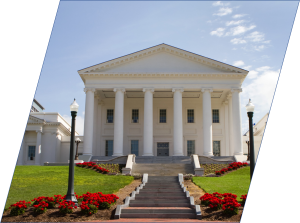 The Commonwealth of Virginia (DMME) initiated The Demand Response Program, starting with few participating facilities and a modest portfolio of 20 MW in 2008, and growing the program to several hundred accounts totaling 122 MW today. DMME added the Energy Efficiency program in 2014 when CPower designed a program that was approved by PJM to reclaim credits for Energy savings projects. The DMME Demand Response Program has become a model for other neighboring states to adopt and/or incorporate, like New Jersey, Ohio and Massachusetts. The program has attracted participation from State Agencies, Institutions of Higher Education and Public Bodies because procurement has been streamlined, comprehensive technical support is provided free of charge, and rebate claims are simplified by CPower. Energy Efficiency Projects spanned statewide covering major utilities territories like Dominion Energy and APCO, and included Co-Op territories such as NOVAC, ODEC, and others. The program is flexible to engage energy efficiency projects at different times of their completion. EE Projects continue to earn rebates for its participants for four years after construction. DMME and CPower continue to grow the program and have earned public facilities millions of dollars since its inception that would have been unclaimed.
The Commonwealth of Virginia (DMME) initiated The Demand Response Program, starting with few participating facilities and a modest portfolio of 20 MW in 2008, and growing the program to several hundred accounts totaling 122 MW today. DMME added the Energy Efficiency program in 2014 when CPower designed a program that was approved by PJM to reclaim credits for Energy savings projects. The DMME Demand Response Program has become a model for other neighboring states to adopt and/or incorporate, like New Jersey, Ohio and Massachusetts. The program has attracted participation from State Agencies, Institutions of Higher Education and Public Bodies because procurement has been streamlined, comprehensive technical support is provided free of charge, and rebate claims are simplified by CPower. Energy Efficiency Projects spanned statewide covering major utilities territories like Dominion Energy and APCO, and included Co-Op territories such as NOVAC, ODEC, and others. The program is flexible to engage energy efficiency projects at different times of their completion. EE Projects continue to earn rebates for its participants for four years after construction. DMME and CPower continue to grow the program and have earned public facilities millions of dollars since its inception that would have been unclaimed.
Low-Income: The Apartments at Kingsridge
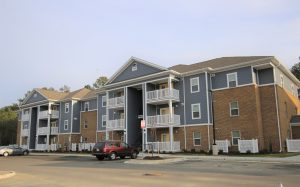 The Apartments at Kingsridge is a 72-unit multifamily development in Henrico County. With easy access to the area’s largest highway system, shopping, pharmacies, and public transportation, the affordable housing provided by Kingsridge is a terrific option for low-income families in the greater Richmond area. Proof of this is evidenced by the 100% occupancy rate at the development. What makes the apartments stand out even more is that the project brought together best design principles of high-performance buildings.
The Apartments at Kingsridge is a 72-unit multifamily development in Henrico County. With easy access to the area’s largest highway system, shopping, pharmacies, and public transportation, the affordable housing provided by Kingsridge is a terrific option for low-income families in the greater Richmond area. Proof of this is evidenced by the 100% occupancy rate at the development. What makes the apartments stand out even more is that the project brought together best design principles of high-performance buildings.
CHP installed a 1-ton Fujitsu ducted mini-split 20 SEER heat pump, Energy Recovery Ventilator and fixed dehumidifiers in units. The ducted mini-splits replace traditional heat pumps and are sized based on meticulous calculations of the apartment’s heating and cooling loads. Lower humidity levels from the dehumidifiers, especially during the summer months, makes the unit more comfortable and allows a higher thermostat setting in the residents’ unit thereby saving on utility bills
Site visits to the property have shown that the system is working as designed. The building commissioning team has noted that units are experiencing lower humidity levels, and residents report that they can maintain higher thermostat settings and still remain comfortable during the hot summer months.
Residential: Klein Residence
 This single family residence has a total of 5,326 square feet of conditioned living space plus 1,004 square feet of semi-conditioned crawlspace. The house is designed for long term, ground floor living. Hallways and door widths were designed to accommodate future wheelchair accessibility.
This single family residence has a total of 5,326 square feet of conditioned living space plus 1,004 square feet of semi-conditioned crawlspace. The house is designed for long term, ground floor living. Hallways and door widths were designed to accommodate future wheelchair accessibility.
The exterior wall consists of fiber cement siding installed over a rain-screen membrane, insulated structural sheathing, high performance fiberglass windows, 2×6 framing and open cell foam. Metal roofing and natural veneer stone provide long term durability and architectural appeal.
The combined advanced building enclosure package and leading-edge HVAC systems, is projected to reduce heating and cooling energy use by nearly 70%. HVAC system features variable speed compressor heat pumps and energy recovery ventilation. Energy efficiency package also includes a heat pump water heater, efficient appliances and all-LED lighting. The house earned a HERS score of -1. With the 12.2kW PV system, the house was projected to achieve zero net energy, and since occupancy begin in January 2018, the PV array has produced 7,195 kWh more electricity than the household consumed.
Program: Appalachian Power Company Low-Income Weatherization Program
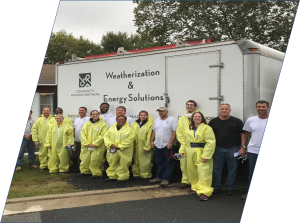 Appalachian Power Company (ApCO) has made the Low-Income Weatherization Program a touchstone among utility-sponsored low-income energy efficiency programs. Unlike prescriptive or direct-installation utility programs, APCo’s program delivers custom retrofit measures determined by an energy model via a comprehensive energy audit of each home. The program utilizes the existing infrastructure of the DOE’s Weatherization Assistance Program (WAP) including weatherization providers, material and installation specifications, and documentation requirements. Over 95-percent of APCo funds are leveraged with WAP funds resulting in reduced number of deferrals the WAP program previously experienced due to job costs in excess of what the WAP program can cover alone. Since 2015, the program has offset the consumption of 16.9 million kWh, representing more than $1,832,000 in avoided cumulative costs to the participating low-income households.
Appalachian Power Company (ApCO) has made the Low-Income Weatherization Program a touchstone among utility-sponsored low-income energy efficiency programs. Unlike prescriptive or direct-installation utility programs, APCo’s program delivers custom retrofit measures determined by an energy model via a comprehensive energy audit of each home. The program utilizes the existing infrastructure of the DOE’s Weatherization Assistance Program (WAP) including weatherization providers, material and installation specifications, and documentation requirements. Over 95-percent of APCo funds are leveraged with WAP funds resulting in reduced number of deferrals the WAP program previously experienced due to job costs in excess of what the WAP program can cover alone. Since 2015, the program has offset the consumption of 16.9 million kWh, representing more than $1,832,000 in avoided cumulative costs to the participating low-income households.
While the program serves APCo’s low-income households in their Virginia service territory, program design and implementation characteristics serve as a best-practice for delivering a utility-sponsored low-income energy efficiency program anywhere in the country. Energy auditing and modeling coupled with the utilization of the weatherization provider network, including Community Housing Partners (CHP) Energy Solutions as the implementation provider, uses existing nationally recognized standards to deliver services safely and provides accountability for all parties involved.
